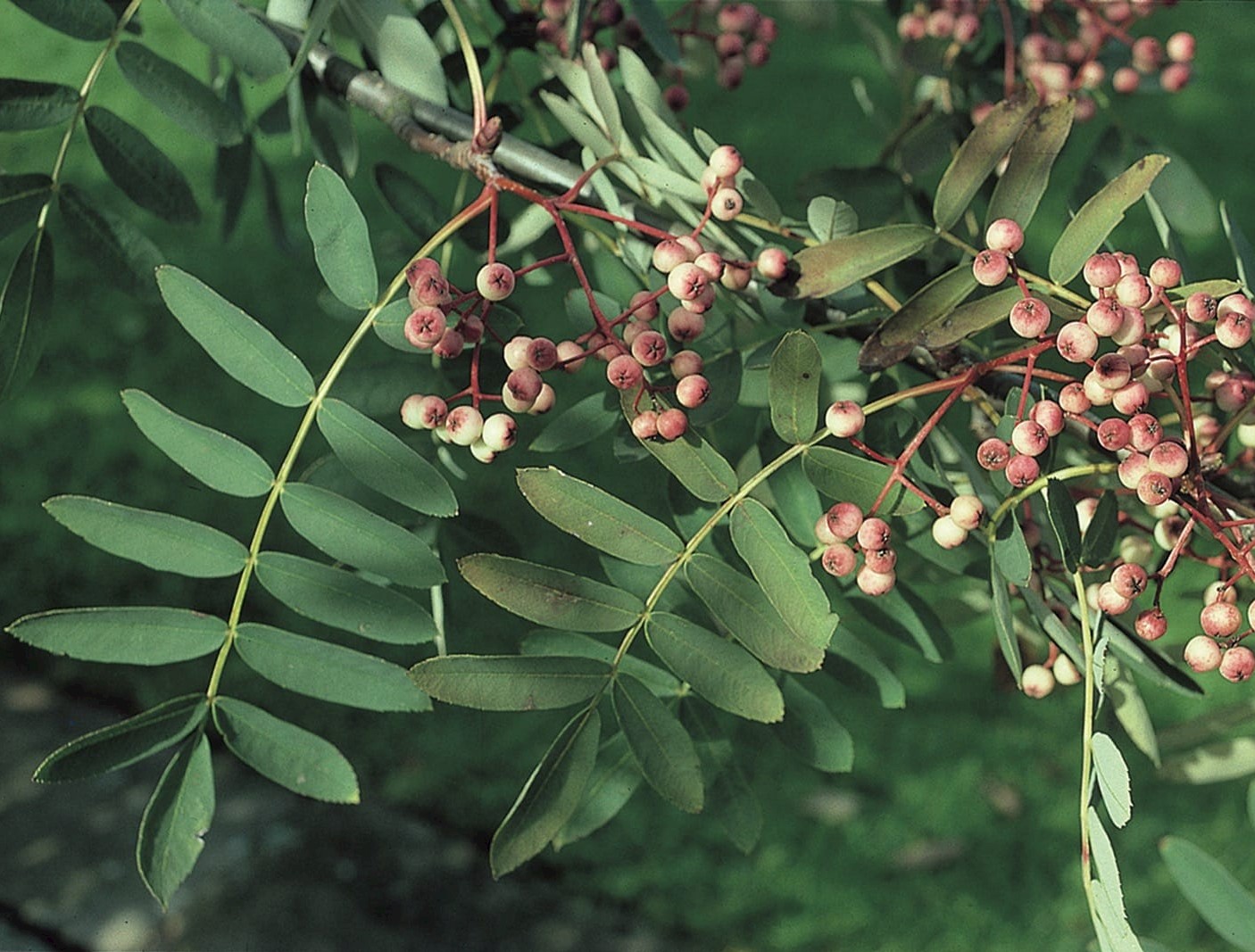Sorbus olivacea
Sponsor
Kindly sponsored by
This genus has been sponsored and new text is being prepared.
Credits
Article from New Trees by John Grimshaw & Ross Bayton
Recommended citation
'Sorbus olivacea' from the website Trees and Shrubs Online (treesandshrubsonline.
Genus
Other taxa in genus
- Sorbus americana
- Sorbus amoena
- Sorbus arachnoidea
- Sorbus aucuparia
- Sorbus carmesina
- Sorbus cashmiriana
- Sorbus commixta
- Sorbus coxii
- Sorbus decora
- Sorbus discolor
- Sorbus ellipsoidalis
- Sorbus esserteauiana
- Sorbus fansipanensis
- Sorbus foliolosa
- Sorbus forrestii
- Sorbus glabriuscula
- Sorbus glomerulata
- Sorbus gracilis
- Sorbus helenae
- Sorbus hupehensis
- Sorbus hypoglauca
- Sorbus insignis
- Sorbus 'Joseph Rock'
- Sorbus khumbuensis
- Sorbus koehneana
- Sorbus kongboensis
- Sorbus kurzii
- Sorbus lingshiensis
- Sorbus matsumurana
- Sorbus microphylla
- Sorbus muliensis
- Sorbus parvifructa
- Sorbus pohuashanensis
- Sorbus poteriifolia
- Sorbus prattii
- Sorbus pseudohupehensis
- Sorbus pseudovilmorinii
- Sorbus randaiensis
- Sorbus reducta
- Sorbus rinzenii
- Sorbus rubescens
- Sorbus rufopilosa
- Sorbus rushforthii
- Sorbus sambucifolia
- Sorbus sargentiana
- Sorbus scalaris
- Sorbus sitchensis
- Sorbus tianschanica
- Sorbus ursina
- Sorbus vilmorinii
- Sorbus wallichii
- Sorbus wilsoniana
Tree to 10 m. Buds ~1.1 cm, red with reddish brown hairs on the margins and apices of the scales. Leaves whitish green, to 26 cm long, with five to six (to seven) pairs of leaflets. Leaflets to 6.3 × 2.3 cm, elliptic to oblong, slightly papillose beneath. Fruit hard, 0.7–0.8 × 0.7–0.9 cm, white flushed with pink or crimson in full sun; carpels (three to) five. Tetraploid apomict (2n = 68). McAllister 2005a. Distribution CHINA: Sichuan (Xichang Co.). Habitat Mountain forests. USDA Hardiness Zone 6. Conservation status Not evaluated. Illustration McAllister 2005a; NT808.
Sorbus olivacea is rather more distinct than other members of section Discolores, having unusually coloured leaves that make it quite conspicuous. The upper surfaces are a soft grey-green and the lower surfaces pale, so the whole tree has a pallid shimmer that will be greatly appreciated in the landscape as it becomes better known. The fruits are white, flushing pink or even red where exposed to the sun, and the tree at Ness, when leafless and covered in fruit, is extremely attractive illuminated by winter sunshine (H. McAllister, pers. comm. 2007). Like S. muliensis before it, it too is from Muli Co., Sichuan, having been collected at 2850 m there by the 1992 SICH team (Fliegner, Staniforth, Howick & McNamara: SICH 1162, as S. oligodonta). Under the number SICH 1482 (1994 expedition) is a similar taxon from Xichang Co., differing in minor details, which is another as yet unnamed apomictic microspecies (McAllister 2005a).


